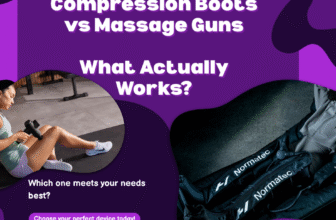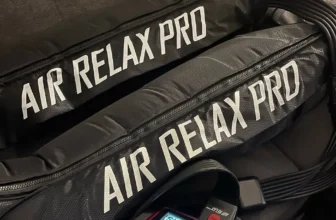Why Is Recovery Important? A Sports Doctor Reveals The Truth

Overtraining syndrome affects 60% of elite athletes and 30% of non-elite endurance athletes. The way you handle recovery could make the difference between achieving your fitness goals and facing a frustrating plateau. Understanding the importance of sleep for athletes and how sleep affects athletic performance is crucial for long-term success.
Your muscles don’t build strength during workouts. The real growth happens when your body repairs itself during rest periods. The body needs to restore homeostasis – a critical balance that leads to peak physical condition. Athletes who skip proper rest and recovery face more than just decreased performance. Their risk of injury increases significantly, highlighting why recovery is important for athletes.
This detailed piece explores the science of post-workout muscle recovery and sleep’s role in injury prevention. A sports doctor gives an explanation about rest and recovery principles, sleep needs, and proven athletic recovery strategies that can reshape your training routine.
The Hidden Cost of Skipping Recovery
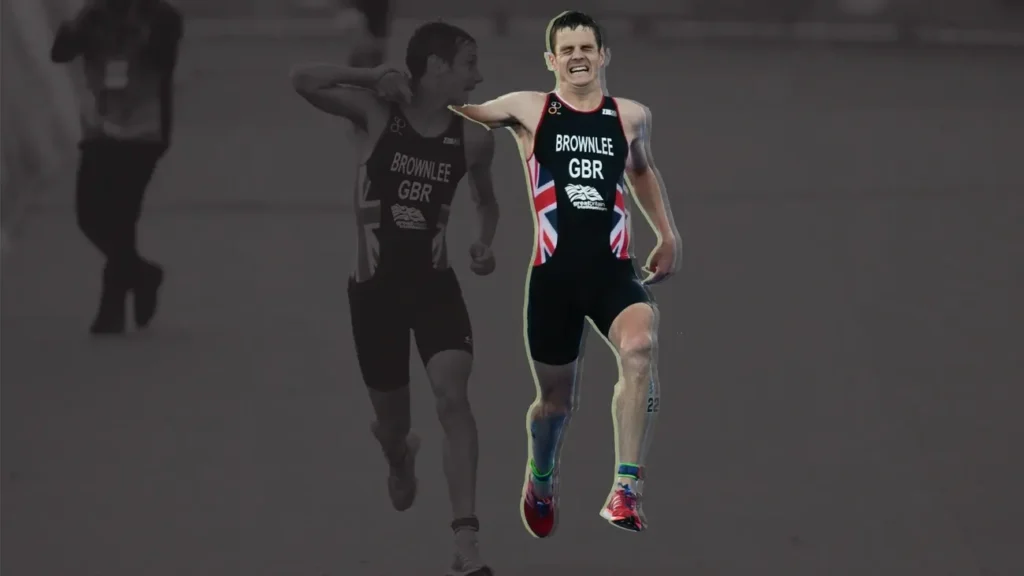
Athletes who push through pain might look heroic, but their bodies pay a steep price for ignoring recovery signals. Research reveals that 50-80% of elite athletes struggle with sleep disturbance [1], and 21% face serious daytime sleepiness [1]. These numbers paint a clear picture of declining performance and careers at risk, emphasizing the critical link between sleep quality and peak athletic performance.
Early signs your body needs rest
Your body sends warning signals when you’re not recovering enough. Sports medicine experts point to a higher resting heart rate as one of the first signs of overtraining [2]. Research with college athletes shows that a lack of sleep slows reaction times and can cut basketball shooting accuracy by half [3], demonstrating the significant impact of sleep on sports performance.
Physical symptoms tend to build up slowly. Look out for these recovery warning signs:
- Muscle soreness that stays beyond 72 hours after a workout
- Unexplained weight loss and decreased appetite [4]
- Getting colds and infections more often [5]
- Taking longer to recover between training sessions [5]
Many athletes mistake these signals as a sign to train harder. This creates a dangerous pattern where stress builds up as training continues without proper rest [1], leading to sleep deprivation and compromised athletic performance.
Mental burnout and loss of motivation
Skipping recovery takes just as heavy a toll on the mind. Non-stop activity leads to burnout when physical and mental rest falls short of what the body needs [6]. Sleep quality plays a crucial role in maintaining mental health and preventing burnout in athletes.
The mind shows these warning signs without proper recovery:
- Poor concentration and thinking ability [3]
- Mood changes and irritability [4]
- No joy in activities once loved [5]
- Growing worry about performance [7]
These signs create a domino effect, with about 10% of athletes facing moderate to severe burnout during their season [8]. Research shows burnout symptoms have kept climbing in the last two decades [8], highlighting the need for better sleep and recovery practices.
Recovery does more than heal muscles—it lets your brain sort through information and store what matters [3]. Without this mental reset, your judgment suffers, and you risk getting hurt. Sleep quality for peak athletic performance is not just about physical recovery, but also about maintaining cognitive function and emotional balance.
Recovery isn’t optional or a sign of weakness—your body demands it. A sports medicine researcher puts it best: “Your body is the only thing that heals your body” [9]. This simple truth shows why recovery matters for lasting athletic success and underscores the importance of sleep and muscle recovery.
How Recovery Supports a Healthy Mind and Body

Recovery goes beyond physical restoration and plays a vital role in mental wellness. Research shows that poor sleep quality and recovery practices connect to the most important mental health challenges for athletes. Poor sleep helps predict injuries and even concussion [10], emphasizing sleep’s role in injury prevention.
Why recovery is important for athletes’ mental health
Sports performance proves the mind-body connection. Athletes who skip recovery hurt their mental health and physical performance. Athletes under high emotional stress show signs of irritation, aggression, and anxiety. These symptoms affect their overall performance negatively [11].
Athletes risk developing mental health disorders and sleep disorders without enough recovery time. Studies of collegiate athletes show that poor sleep quality reduces reaction times and accuracy [3]. Student-athletes average only 6.27 hours of sleep per night during competitive seasons. This falls well below the needed 8 hours [12], highlighting the importance of sleep duration for optimal athletic performance.
The role of sleep in emotional balance
Your brain uses sleep as an emotional regulator. Sleep quality impacts athletes by helping the brain process information and filter out unnecessary data. It strengthens memory and newly learned skills that become natural parts of your performance [3].
The International Olympic Committee’s mental health documents highlight how sleep deprivation affects emotional well-being [10]. Athletes who don’t get enough sleep report:
- More irritability and mood swings
- Higher anxiety and depression symptoms
- Less resilience to competitive stress
- Poor focus and decision-making skills
These effects underscore the critical relationship between mental health and sleep in athletes, as well as the overall impact of sleep on sports performance.
Reducing stress through active recovery
Active recovery plays a vital role in mental recovery through low-intensity activities after intense training [13]. These activities reduce stress and anxiety. They also promote mental clarity beyond physical benefits.
Massage therapy boosts blood circulation and creates relaxation needed for peak athletic performance [13]. Relaxation methods like meditation and deep breathing create calm. This allows your body to perform at its best [14].
Research proves the power of mind-body balance. Athletes with positive mental states show better physical performance. Stress causes muscle tension and poor coordination [15]. Adding recovery to your routine isn’t just helpful—you need it to succeed in athletics long-term. Implementing effective sports recovery methods and active recovery workouts can significantly enhance an athlete’s overall well-being and performance.
Making Recovery a Lifestyle, Not a Chore
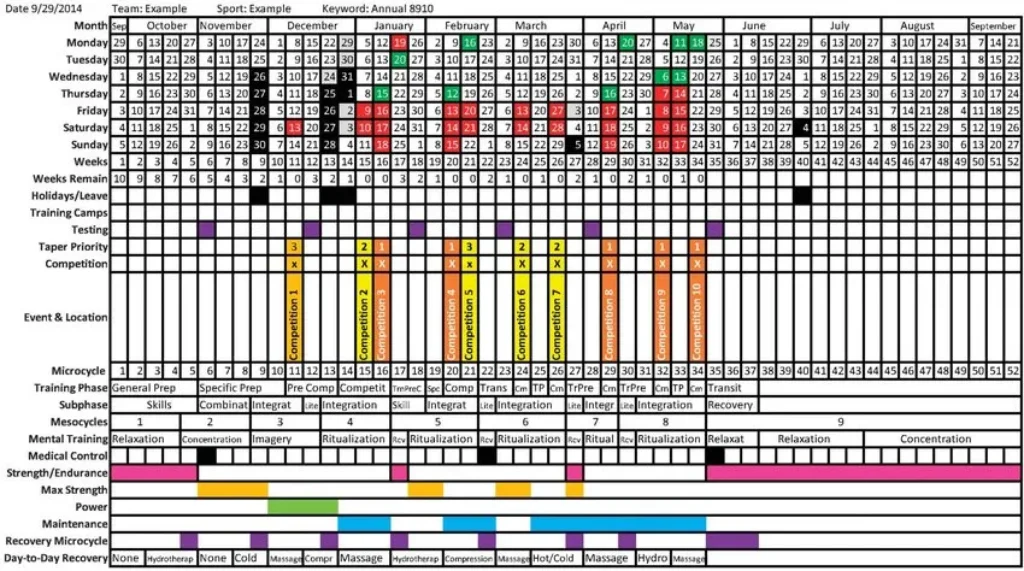
Elite athletes know a secret – recovery is crucial for athletic performance. They don’t see recovery as just downtime. It’s a key part of their training plan. Your muscles actually get stronger during rest, not during workouts [16]. Understanding this principle is essential for optimizing sleep and recovery for athletes.
Creating flexible training schedules
Many athletes make the mistake of sticking to rigid schedules that ignore their body’s signals. A “readiness rating” system works better:
- Give yourself a daily score from 1-3 based on physical recovery, stress level, and motivation [17]
- Choose workouts that match your readiness level
- Adjust your intensity based on these scores
This approach lets you get quality training and cuts your injury risk. Pro athletes now use periodization in their yearly plans. They alternate three weeks of progressive training with one recovery week [18]. Your body repairs and grows stronger through this cycle to handle bigger challenges.
Most people think less training means losing fitness. That’s not true. Research shows that cutting your training load by 30% during recovery weeks helps your body adapt better [9]. Your body needs this time to process your previous workouts and get ready for new challenges. This strategy emphasizes the importance of incorporating recovery time in workout programs.
Using rest days to build long-term habits
Athletes often fill their rest days with errands or tackle big projects during recovery weeks [19]. This defeats the whole point of recovery – letting your body rebuild. Smart athletes schedule massages, meditate, or just relax during these periods to enhance sleep quality and overall recovery.
Good recovery habits stick when you practice them daily. Better sleep starts with a few simple rules: no phones before bed, keeping your bedroom gadget-free, and following a bedtime routine that calms your mind and body [18]. These habits become automatic over time and contribute to athlete sleep optimization.
A training log that tracks your recovery metrics, sleep quality, and energy levels is a great way to get insights [18]. This data shows patterns that help you find the perfect balance between training and recovery, allowing you to fine-tune your athletic recovery strategies.
Tools and Techniques That Actually Work
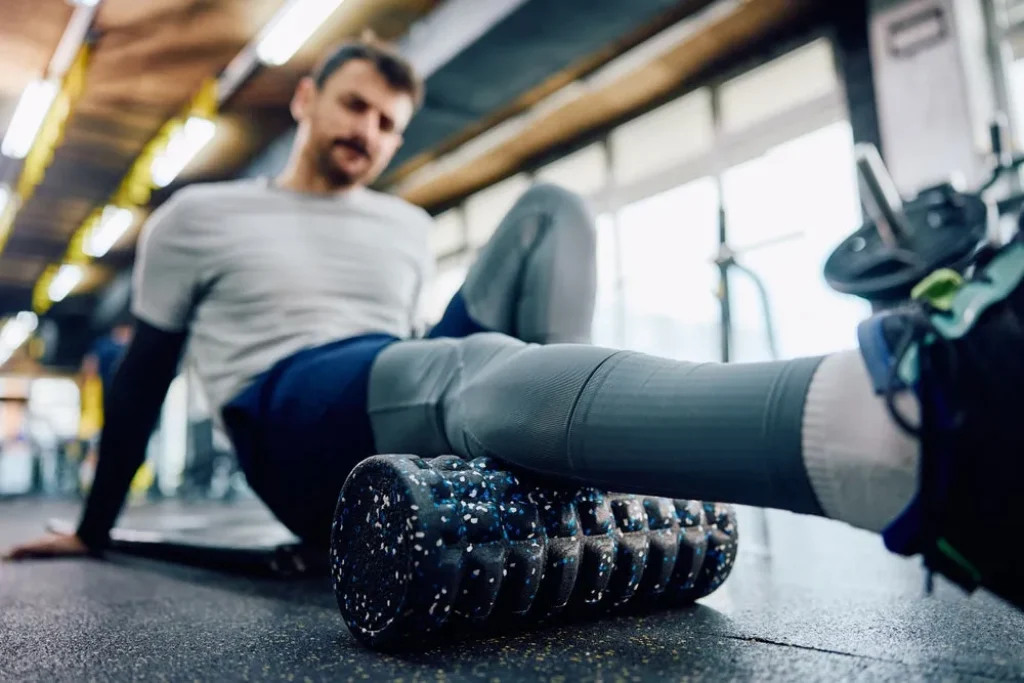
Recovery tools can make the difference between basic rest and complete body rebuilding. You can substantially boost your recovery process by using research-backed techniques the right way. These sports recovery methods and muscle recovery techniques are essential for maintaining peak performance.
Foam rolling and stretching
Foam rolling has become the life-blood of muscle recovery because it’s easy to use and works well. Studies show foam rolling for 90-120 seconds per muscle group cuts down delayed onset muscle soreness (DOMS) and helps you move better [20]. A 2020 review of 49 studies backed these benefits and found that you get the best results with regular use [21].
Research shows foam rolling edges out stretching techniques in performance benefits, especially when you:
- Target specific muscles like the quadriceps
- Roll for more than 60 seconds
- Add vibration technology [22]
The best approach is to foam roll before workouts to improve flexibility and after exercise to reduce soreness. This technique is particularly effective for addressing fatigue and enhancing overall recovery.
Cryotherapy and red light therapy
Ice baths have been a recovery go-to, but science keeps evolving. Cold water immersion at 10-15°C (50-59°F) for 10-15 minutes helps as a quick post-exercise recovery tool [21]. But long-term use after resistance training might actually slow down muscle gains.
Red light therapy stands out as a powerful option that uses specific wavelengths to kick-start cellular processes. Studies prove it works better than cryotherapy to help you recover from exercise, especially in reducing muscle damage markers like creatine kinase [23]. It works by getting mitochondria to produce energy and control oxidative stress, which reduces inflammation markers [24].
Float tanks and massage for deep recovery
Float tanks—chambers filled with salt water at skin temperature—create an environment free from sensory input that helps deep recovery. Pro teams are adding float tanks to their facilities more often as research shows they help with muscle soreness, blood markers, fatigue, and mood [21]. This method can be particularly beneficial for addressing sleep disorders and improving overall sleep quality.
Massage therapy also boosts recovery by improving blood flow and loosening tight muscles. Research confirms that massage can reduce DOMS if you get it soon after exercise [5]. A quick 10-15 minute self-massage can give you substantial benefits when you can’t get professional treatment. Regular massage can contribute to better sleep quality and help manage insomnia in athletes.
Conclusion
Athletic recovery is the life-blood of peak performance, not just an optional add-on to your training routine. Scientific research demonstrates that proper recovery prevents burnout, reduces injury risk, and allows your body to adapt and grow stronger. The importance of sleep for athletes cannot be overstated, as it directly impacts both physical recovery and mental acuity.
Your most powerful recovery tool is sleep, yet many athletes still underestimate its value. The quickest way to maintain long-term progress involves making recovery a consistent part of your training schedule. Athletes can utilize foam rolling, light therapy, or float tanks to avoid the pitfalls and enhance their sleep quality for peak athletic performance.
Recovery quality holds equal importance to training quality. Your body requires this time to repair, rebuild, and prepare for future challenges. Are you ready to elevate your recovery game? Our top-rated fitness recovery gear will help you maximize your results today!
Green success comes from a smart balance between intense training and proper recovery periods. Athletes at every level – from professionals to weekend warriors – who prioritize recovery perform better, stay injury-free, and achieve their fitness goals faster. By understanding the critical role of sleep and recovery for athletes, you can optimize your performance and safeguard your long-term athletic career.
FAQs
Q1. How does recovery impact athletic performance? Recovery is crucial for athletic performance as it allows muscles to repair and grow stronger. It helps prevent burnout, reduces injury risk, and enables the body to adapt to training stresses. Proper recovery also improves mental focus and decision-making abilities, which are essential for optimal performance. Sleep quality plays a significant role in this process, directly influencing an athlete’s ability to perform at their peak.
Q2. What are some effective recovery techniques for athletes? Effective recovery techniques include foam rolling for 90-120 seconds per muscle group, cold water immersion at 10-15°C for 10-15 minutes, red light therapy to reduce muscle damage, and using float tanks for sensory deprivation. Massage therapy, whether professional or self-administered, can also significantly aid in reducing muscle soreness and tension. Additionally, active recovery workouts and proper sleep hygiene are crucial components of a comprehensive recovery strategy.
Q3. How much sleep do athletes need for optimal recovery? While individual needs may vary, most athletes should aim for at least 8 hours of sleep per night. Quality sleep is crucial for physical restoration, emotional regulation, and cognitive function. It helps process newly learned skills and strengthens memory, which are vital for athletic performance. Sleep duration and quality both play critical roles in an athlete’s recovery and overall performance.
Q4. Can overtraining negatively affect an athlete’s mental health? Yes, overtraining without adequate recovery can significantly impact an athlete’s mental health. It can lead to increased irritability, mood disturbances, anxiety, and depression symptoms. Chronic stress from non-stop activity can result in burnout, decreased motivation, and loss of enthusiasm for previously enjoyed activities. Sleep deprivation, often a consequence of overtraining, can exacerbate these mental health issues and lead to various sleep disorders.
Q5. How can athletes incorporate recovery into their training routine? Athletes can incorporate recovery by creating flexible training schedules that include recovery weeks, implementing a daily readiness rating system to adjust workout intensity, and establishing good sleep hygiene habits. It’s also beneficial to use rest days for activities like massage or meditation, and to consistently track recovery metrics alongside training data. Focusing on sleep quality, implementing effective sports recovery methods, and understanding the importance of recovery time in workout programs are all crucial for optimizing athletic performance.
References:
[1] – https://pmc.ncbi.nlm.nih.gov/articles/PMC8072992/
[2] – https://ntcc.edu/athletics/live-athlete/dr-toms-blog/motivationovertraining
[3] – https://www.mayoclinichealthsystem.org/hometown-health/speaking-of-health/sleep-and-athletic-performance
[4] – https://www.luriechildrens.org/en/specialties-conditions/athlete-burnout/
[5] – https://www.verywellfit.com/massage-after-exercise-may-speed-muscle-recovery-3436572
[6] – https://www.nata.org/nata-now/articles/2016/04/burnout-athletes
[7] – https://www.nebraskamed.com/health/conditions-and-services/sports-medicine/how-can-a-sports-injury-affect-mental-health
[8] – https://www.tandfonline.com/doi/full/10.1080/1750984X.2023.2225187
[9] – https://www.usatriathlon.org/articles/training-tips/the-importance-of-recovery-weeks-and-rest-days
[10] – https://pmc.ncbi.nlm.nih.gov/articles/PMC9960533/
[11] – https://pmc.ncbi.nlm.nih.gov/articles/PMC8883945/
[12] – https://www.performanceorthosports.com/blog/the-importance-of-sleep-for-athletes-42657.html
[13] – https://athlecare.com/the-essential-guide-to-active-recovery-for-athletes-tools-and-techniques/
[14] – https://usclubsoccer.org/the-mind-body-connection-for-athletes-via-onrise/
[15] – https://competeperformance.com/blog/the-mind-body-connection-how-mental-health-influences-athletic-performance/
[16] – https://www.massgeneralbrigham.org/en/about/newsroom/articles/recovery-for-athletes
[17] – https://www.triathlete.com/training/try-a-flexible-training-schedule/
[18] – https://www.uchealth.org/today/rest-and-recovery-for-athletes-physiological-psychological-well-being/
[19] – https://www.trainingpeaks.com/blog/the-best-recovery-practices-for-endurance-athletes/
[20] – https://pmc.ncbi.nlm.nih.gov/articles/PMC6465761/
[21] – https://www.sportsmith.co/articles/10-recovery-tools-and-techniques/
[22] – https://www.frontiersin.org/journals/physiology/articles/10.3389/fphys.2021.720531/full
[23] – https://www.medco-athletics.com/articles/red-light-therapy-vs-cryotherapy-for-sports-recovery
[24] – https://pmc.ncbi.nlm.nih.gov/articles/PMC5167494/



